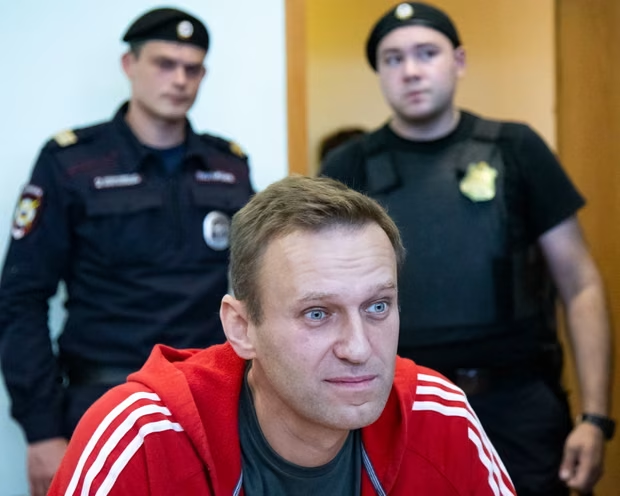
🔍 New Developments
Yulia Navalnaya, the widow of the late Russian opposition leader Alexei Navalny, has announced that two independent foreign laboratories have confirmed Navalny was poisoned while in detention at an Arctic penal colony. Al Jazeera+2ABC News+2
Navalnaya said that biological samples were secretly smuggled out of Russia and tested abroad, and both laboratories reached the same conclusion: Navalny’s death was caused by poisoning. However, she also emphasized that none of the labs have publicly disclosed the specific toxin or details of the tests, citing “political considerations.” Meduza+2ABC News+2
The Russian authorities, including prison officials and the Kremlin, continue to deny the poisoning claims. Official statements attribute Navalny’s death to natural causes, such as cardiac arrhythmia or “sudden death syndrome.” Wikipedia+2The Insider+2
⚙️ What the Newly Released Documents Reveal
According to The Insider, earlier versions of investigation documents contained detailed descriptions of Navalny experiencing abdominal pain, vomiting, and convulsions—symptoms consistent with toxic poisoning. The Insider+1
However, these references to vomiting and stomach pain were stripped from the final official version of the document. The same source indicates that vomit samples were registered in inventory records and noted for examination, but that fact was never publicly acknowledged. Wikipedia+1
The discrepancy between early medical notes and the edited final report has raised serious questions among independent investigators about whether the official narrative was altered. The Insider+2Wikipedia+2
⚔️ Historical Context: Navalny’s Previous Poisoning
This is not the first time Navalny was poisoned. In August 2020, he fell ill on a flight from Tomsk to Moscow. Western medical teams later confirmed exposure to a Novichok nerve agent. Wikipedia+3Wikipedia+3Wikipedia+3
The Organisation for the Prohibition of Chemical Weapons (OPCW) confirmed the presence of a Novichok-type substance, and investigations by Bellingcat and The Insider linked the poisoning to agents from Russia’s Federal Security Service (FSB). Wikipedia+2Wikipedia+2
Navalny later recovered in Germany and publicly accused Vladimir Putin of orchestrating the attack. Russia has consistently denied involvement. Wikipedia+1
⚖️ International Reactions & Political Fallout
Navalnaya’s announcement is intensifying international scrutiny. Advocates and human rights organizations are calling for transparent release of toxicology reports and independent investigations to confirm what substance was used and how. Al Jazeera+2CBS News+2
Some analysts believe that this new confirmation could reshape how the world views Navalny’s death—from a tragic “natural death in custody” to a politically engineered elimination. CBS News+2Meduza+2
Meanwhile, Kremlin spokespeople reject the poisoning allegations, and Russian officials have issued conflicting statements about the cause, citing heart issues or sudden death syndrome without providing detailed autopsy reports. Wikipedia+2Meduza+2
⚠️ Why This Matters to Gen Z & Global Audiences
Trust in government institutions—especially those controlling prisons—has been shaken. If a dissident can be poisoned inside a state-run facility, it raises deep questions about how political prisoners are treated.
The case highlights the dangerous stakes of political activism and opposition in authoritarian states. Navalny’s earlier poisoning didn’t silence him—his return to Russia and subsequent imprisonment were bold moves that drew widespread attention and risk.
For younger audiences especially, who are increasingly engaged in digital activism and global movements, the Navalny story illustrates how modern political dissent can come with surveillance, chemical attacks, and state repression.
The lack of clarity—no public toxicology report, no transparent autopsy, no admission of wrongdoing—feeds into narratives about disinformation, state censorship, and state-sanctioned violence.
🧩 What We Still Don’t Know
The exact toxic agent used in the prison poisoning has not been publicly identified.
The chain of custody for the biological samples, and how they were obtained, transported, and analyzed remains murky.
There is no definitive public proof that prison staff, Russian security services, or another actor deliberately administered the poison.
Official Russian forensic and investigative records remain sealed or have been revised; independent observers have not had full access.
Whether international legal or criminal proceedings will investigate this new poisoning allegation—and if so, whether they’ll reach a conclusive outcome—remains unclear.
✅ Final Thoughts
Yulia Navalnaya’s announcement marks a serious turning point in how Navalny’s death is viewed internationally. What had been portrayed by Russian officials as a sudden or natural death in custody is now being questioned with renewed allegations of poisoning. The confirmation from foreign labs—if further substantiated—could shift the narrative from tragic fatality to potentially orchestrated political murder.
But many questions remain unanswered. Without a public toxicology analysis, transparent investigative findings, or access to prison forensic data, the truth of what exactly happened to Navalny in his final days continues to be disputed. For Gen Z and global observers, the Navalny story underscores not just the dangers faced by political dissidents, but also the struggle over information, truth, and accountability in authoritarian contexts.

Leave a comment
Your email address will not be published. Required fields are marked *